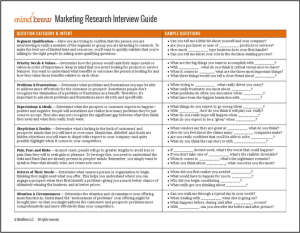Over the past few years, “fail fast and fail often” has become very popular business advice. In certain parts of the economy—particularly startups and software development companies—failures have morphed into badges of honor.
Here at PricingBrew, we don’t want to discourage anyone from taking necessary risk. And we believe that all pricing teams are going to make occasional mistakes.
But the “fail fast and fail often” mantra has limits when it comes to pricing. If you are making small mistakes as a pricing team, those are great. You can learn from them. And over time, those small mistakes will be very helpful in optimizing your pricing and segmentation structure.
However, if you are making big mistakes as a pricing team, that could be disastrous.
Pricing is such a critical piece of the business that one huge mistake could drive the company into bankruptcy or even out of existence if it isn’t corrected in time.
Now, notice, when we’re talking about big mistakes, we’re not talking about a typo on the price list. Of course, if you put a decimal point in the wrong place, that could have some pretty big consequences for a particular product or line, but that’s usually fairly easy to spot and fix.
The kind of mistakes we’re talking about are strategic thinking errors that lead organizations down the wrong path. And ironically, these huge mistakes are often the toughest to spot while you’re making them. It’s only in hindsight that you realize that you realize your error—and by then it is usually too late to do anything about it.
We’d like to help pricing teams steer clear of these pitfalls, so we devoted an entire webinar to Avoiding the Top 10 Pricing Mistakes.
One of the most sinister mistakes we uncovered in the research for the webinar was the mistake of “applying Band-Aids” to problems. By this, we mean that pricing teams use an easy fix to address the symptoms of a problem without investigating or correcting the root causes.
For example, imagine the sales team is complaining that prices are too high. (And yes, we realize that for most of you this scenario doesn’t require a whole lot of imagination because it’s probably happened at least once this month.)
It’s really tempting in this situation to get into an argument with sales. You show them your proof points and try to convince them you’re right. Typically, this interaction ends with a compromise. You lower prices a bit, but not as much as sales would like. No one is happy, but it was the best possible outcome, right?
Probably not.
A complaint from sales is often a sign that something else is wrong. Maybe sales is targeting the wrong customers. Maybe there’s a problem with your segmentation model. Maybe sales isn’t communicating the right value messages to the customers. Maybe you have a problem with the product, and it isn’t really meeting customers’ needs.
If you negotiate a compromise with sales, you haven’t really addressed the root problem. Lowering prices is only going to erode margins, and eventually, this approach could cause the company to start hemorrhaging red ink. In the same way that slapping a Band-Aid on a severed artery isn’t really going to help, adjusting prices isn’t really going to fix your underlying business problem. It’s only going to cause the problem to persist, and it might even makes things worse.
Yes, you might find after investigation that you need to tweak some prices, but then you’ll be doing it for the right reasons. You might actually need a Band-Aid after surgery to fix your severed artery too. It’s not that you never want to adjust prices, but that you want to adjust prices in ways that help the company reach its goals rather than working counter to those goals.
You can learn more about how the process of investigating root causes works in the case study on Exploring the Root-Causes of Pricing Problems. It walks you through seven real-world examples where a pricing team avoiding the mistake of applying a temporary fix and instead went through the hard work of identifying the true root issues.
You might also want to check out the diagnostic tool on Finding Margin Leaks in Your Sales Processes. It provides a step-by-step guide for finding and addressing common root causes to B2B pricing problems.
















